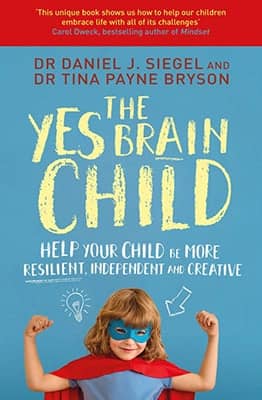Michael’s Success in Not For Profit
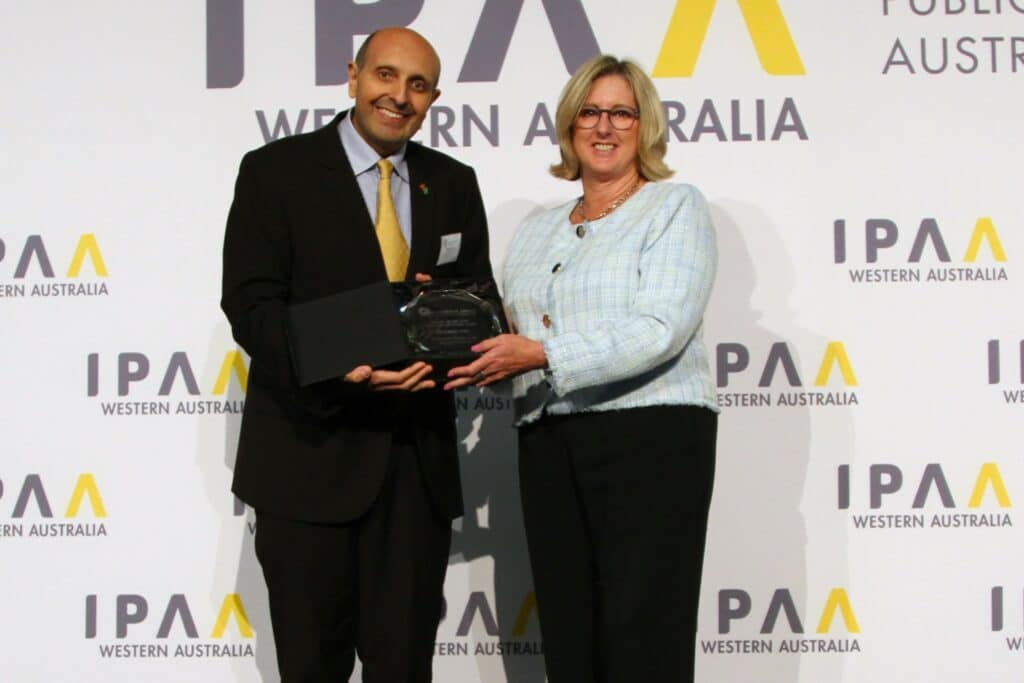
Santa Maria College father and College Advisory Committee member Michael Piu, was recently awarded Leader of the Year for his work in the not-for-profit sector by the Institution of Public Administration Australia (IPAA). Michael has daughters in Years 11, 10 and 7. We asked Michael to share his story with us.
What does winning this award mean to you?
I have been so blessed to work alongside such an outstanding group of committed and passionate professionals. Without them, we could not have achieved what we have at St Pat’s.
I was deeply moved when I found out that my colleagues had nominated me for Leader of the Year in the not-for-profit sector! I learned about the nomination when the Institution of Public Administration Australia made the finalists public. It was particularly special to be nominated alongside such incredible people, whom I greatly admire and value. I feel any one of them would have been a very deserving winner.
To cap off St Pat’s 50th Anniversary celebrations this year, our organisation was also honoured at the recent National HESTA Excellence Awards, where we were named the Outstanding Community Service Organisation of the Year across Australia. These acknowledgments are important to reward our team members’ unselfish efforts and build the public support required for us to scale up our response to what is, sadly, the significantly growing need we are seeing in our community.
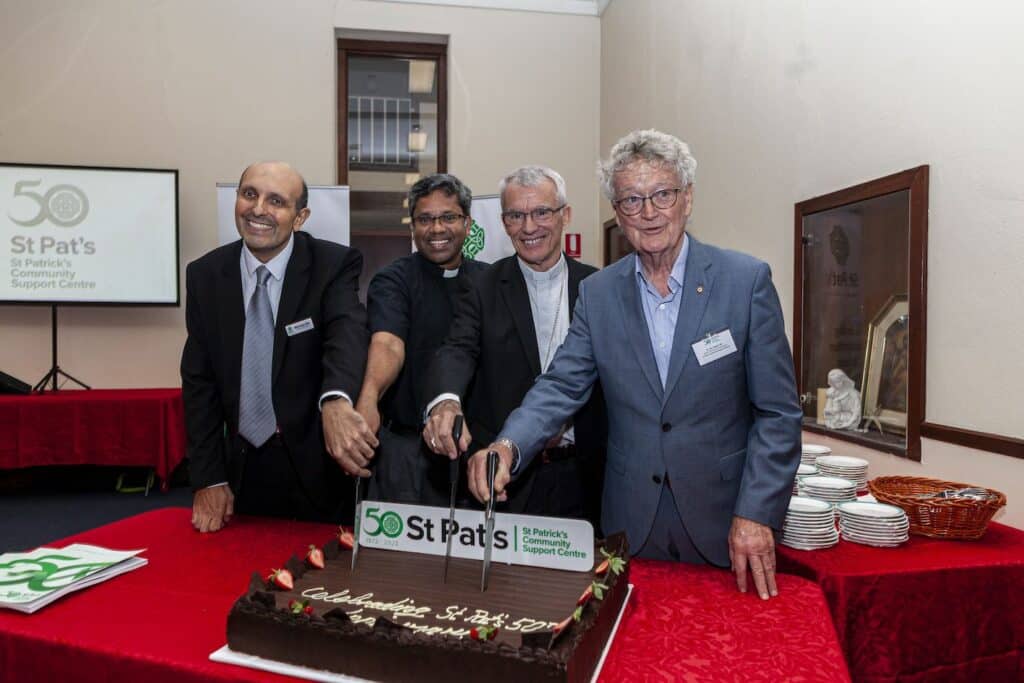
Tell us a little about your background
I was born and grew up in Melbourne. However, I have lived here for nearly 25 years and am a proud Western Australian by choice. So hopefully, I have passed muster by now! I grew up in Coburg, a working-class suburb in Melbourne’s inner north. Coburg had a large community of post-war European migrants like my parents. I learnt a lot about the challenges facing new migrants through my mother, who worked in community development to provide support for people, including low-income families living in public housing.
I went to St Oliver Plunket, our local parish primary school, then to St Kevin’s College in Year 7, a Years 5 – 12 College for boys run by the Christian Brothers.
After completing what was then known in Victoria as the HSC (Higher School Certificate), I went on to further study at Monash University, undertaking a degree in social sciences, followed by a graduate degree in law. While studying, I was fortunate to work as an administrator and law clerk in a community legal service and later as an electorate officer for a Federal Member of Parliament. It was a great experience that set me up for my future career.
My aim in pursuing a legal career combined my interest in social issues with an interest in law, in human rights advocacy or something similar. However, immediate practical interests took precedence. In those days, to fully qualify as a lawyer, you needed to undertake an apprenticeship known as an Articles of Clerkship, and those were as rare as hens’ teeth, with fierce competition.
I always remember the interview for a position I was ultimately successful in. It was one of the first job interviews I ever had, and I had to face a panel of experienced law partners firing questions at me from all angles. There were just four positions at that firm, and I accepted the job with gratitude.
After a couple of years, I found the work I was doing was not for me and put feelers out for a change. I was approached by a recruiter working for a Perth-based firm looking to expand its practice. I had never been to WA and honestly knew little about it other than from a cousin who had visited for a holiday and said it was nice there. I was happy to give it a go, so I accepted an interview and hit it off straight away with the managing partner. I was the last to be interviewed that day, and he offered me the job on the spot. I moved to Perth about a week or so later! I thought I would try it out for a year. After a difficult start away from family and friends, it turned out to be one of the best moves I made – other than meeting and marrying my wife, Marisa!
You’ve had a varied work history, but one thing that seems to be a constant for you is your passion for working in the NFP and health/community sectors. Why did you decide to take this direction?
My original plan for my studies and career was to work in an area related to social advocacy and human rights. However, practical considerations won out in terms of my early career path. I was very fortunate to work with some great people, particularly when I established and ran my own firm. However, I recognised that I was yearning for something different, and I would only be partially satisfied by the work I was doing, fortunate though I was. It was a combination of my legal practice and my volunteer work that eventually led to a career change.
I joined the Board of St Pat’s back in 2000. The CEO then asked me to help them with a challenging project. I was able to assist them, and one thing led to another. I left the Board, wound down my practice, and went to work for St Pats.
I think a lot of people, including professional colleagues and some of my extended family, questioned the move, perceiving I would have less security, fewer career prospects and maybe even less prestige in the eyes of some. I think even now, some cannot quite figure it out. However, I always had the backing and support of my wife, which I am so grateful for. I have never looked back. It’s challenging work and a much more significant workload overall than I had when I was in legal practice (and that is saying something).
On the other hand, it’s incredibly rewarding and satisfying. As a practising Catholic, I feel privileged to have a job in an organisation that translates our faith into action by working alongside those most vulnerable. I have seen people with nothing who, with the support of our organisation, have turned their lives around and thrived, and it’s those stories that really make everything we do so worthwhile.
It’s also such a diverse job that makes good use of the training and skills I have gained over the years. With a professional staff approaching 100 and around 150 volunteers, St Pat’s is a considerable operation. Our services include providing housing and tenancy management for around 350 in the short and long term. We also deliver various support services across the whole metropolitan area down through the Peel region. We also provide more than 26,000 meals, 10,000 food packages and, working with other not-for-profits and the Government, deliver a range of other specialist supports.
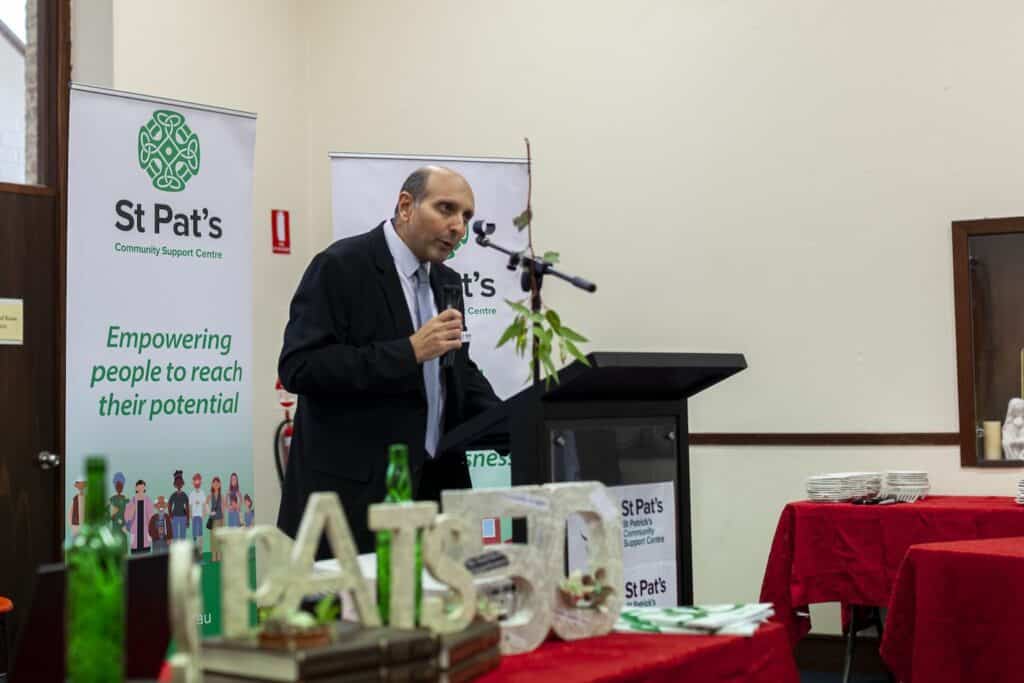
What does your role as CEO of St Patricks Community Support Centre entail, and what changes you have seen during that time?
When I joined the team, I think there may have been around 20 staff, and we were almost entirely based in the former schoolhouse (now Parish Hall) behind St Patrick’s Basilica. In the late 2000s, there was a lot of focus and investment in the issue of homelessness, and this was one of the first areas of work I was involved in. With the support of the Archdiocese, we moved our day centre to the nearby (but much larger) former Stella Maris Seafarers Centre. Through new government funding, we were supported to set up a range of new programs that have had a significant impact ever since.
By the time I took over as CEO declining levels of real funding were starting to bite. One of the difficult tasks I had was cutting things back to ensure we were sustainable. However, the hard work of our team, strong advocacy and partnership, and a focus on innovation led us to grow our scale and impact. What will never change for us, however, is our focus on putting those most vulnerable in our community at the centre of our work and our commitment to ending chronic homelessness.
Unfortunately, the story of change is not all a positive one. The levels of homelessness and disadvantage have been growing. It is genuinely true that the need at present is far greater than I have ever seen. I think the pandemic and its global consequences, along with geopolitical instability in Eastern Europe, have created somewhat of a perfect storm here locally.
Meanwhile, the cost of living has increased considerably. The combination of the cost of living and housing shortages has seen a whole new group of people in our community at risk of homelessness, including low-income working individuals and families. This presents new challenges for services like St Pats, both in terms of meeting the need and reaching people early enough to help them before they become entrenched in the situation. Many people now in need have never had dealings with the welfare system and don’t particularly wish to.
To respond, St Pat’s has sought to innovate by diversifying the way we offer support and reach people, such as establishing an outreach service called Library Connect at the Fremantle Library and our Community Store in Adelaide Street Fremantle, where people can access personal and material support in a more comfortable and accessible environment through a retail-like shopfront.
It is fortunate that we have the team, funders and supporters that allow us to respond and innovate in these ways and continue to make a difference despite the challenges.
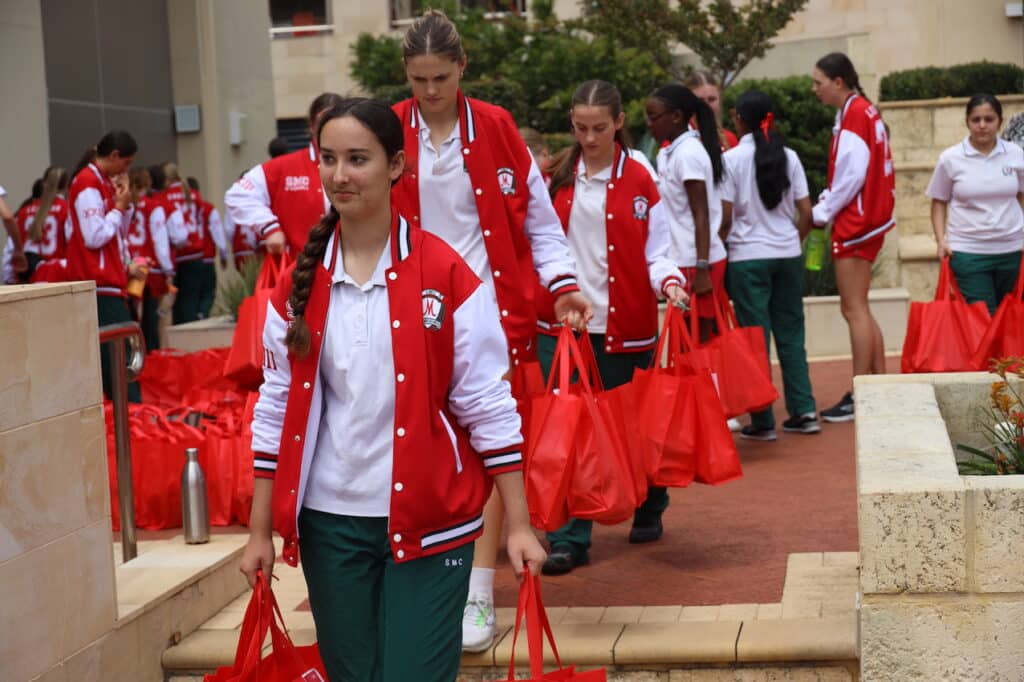
Santa Maria has a strong connection with St Pat’s. Tell us about the relationship between our school and your organisation
St Pat’s has been very fortunate to have a long-standing and strong relationship with Santa Maria College, which has supported St Pat’s mission in various important ways over the years.
A recent example of this was the wonderful donation of Christmas Hampers, received on St Pat’s behalf by our Housing Manager and Santa Maria alumnus, Julia MacDonald. These hampers made a huge difference in helping disadvantaged individuals and families have a dignified Christmas celebration, particularly in the current difficult economic times. They also have another very important impact because they demonstrate the solidarity and care the Santa Maria College community has for those in need. Oftentimes, that demonstration of love and care is just as important to people who have become marginalised and whose dignity and sense of self-worth has been undermined by their life experiences.
All of us at St Pats as deeply grateful for our relationship with Santa Maria, and equally, I feel very proud that our family is a member of that same wonderful Santa Maria community.
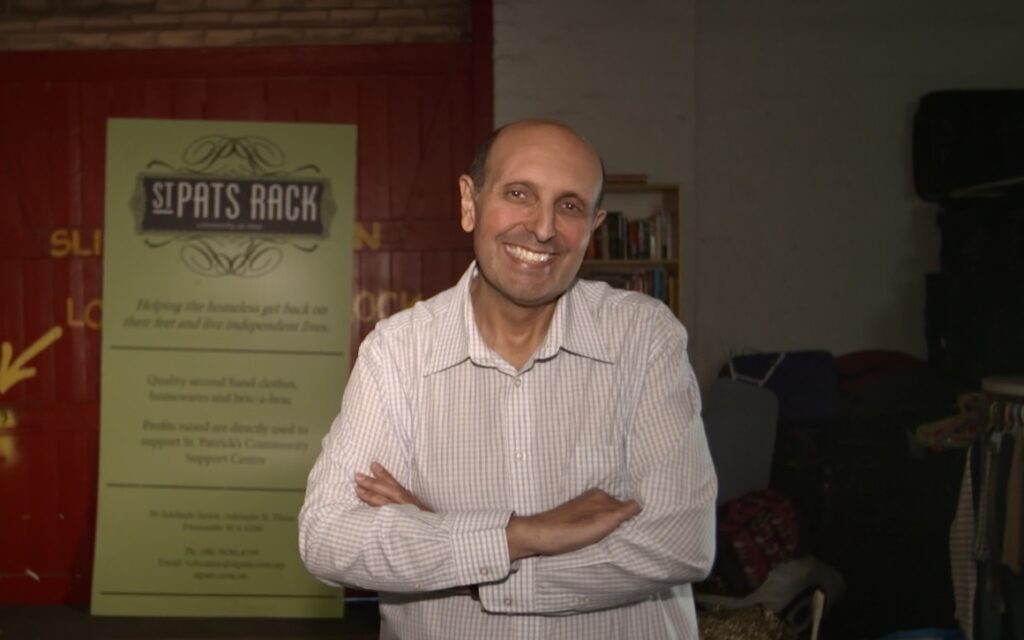
As a parent and member of the Santa Maria College Advisory committee, where would you like to see Santa Maria in five years’ time?
I am really excited by Santa Maria’s current strategic direction, and I have to say, at this point, just two years into the Strategic Plan, so much has been achieved by the College despite the challenges presented by a global pandemic.
I strongly believe that we should be supporting young women to have limitless horizons, breaking and discarding old stereotypes, and emphasising that all is possible. This is my view not simply because I am the father of three daughters but because I believe fundamentally that the world will be a far better place when there is true equity and women excel in all walks and aspects of life. The work Santa Maria College has been doing in developing students as whole people, not only in academia but across a range of practical and leadership skills, is both important and exciting. I have to say as an aside that a particular favourite for me has been the recent opening of the woodwork shop!
Whilst no doubt Santa Maria families come from all walks of life, it’s probably fair to say, particularly from the perspective of what I see in my work, that Santa Maria students experience relative privilege. Whilst this is something to be grateful for, this also means that students might be somewhat shielded from and desensitised to the challenges faced by disadvantaged members of our community. Pope Francis calls upon us to have a “spirit of poverty”, but it’s difficult to do this if we are unable to connect with and deepen our understanding of the perspective of others who are less fortunate than ourselves. As the College Mission Statement says, “We understand that our world is bigger than ourselves, our school and our community”.
Pope Francis said “We can be very attached to money, possess many things, but in the end, we will not take them with us. I always remember what my grandmother taught me “The burial shroud has no pockets,’”. However, a spirit of poverty “leads us to use our wealth and technologies, goods and talents in favour of integral human development, the common good, social justice and the care and protection of our common home.”
The Santa Maria vision statement states that “We provide an environment where students apply their knowledge, innovate and have a positive impact on our people and our planet.” This very much reflects the calling of Pope Francis. The College’s strategic pillar of Social Innovation provides a truly exciting opportunity to combine important learning opportunities for the students whilst building an awareness of the world’s social issues and developing a commitment to use students’ talents and resources to address those.
The College is already doing fantastic work in this area. I look forward to the College continuing and expanding on projects and programs that provide opportunities to interact and collaborate with people from diverse social circumstances and backgrounds, building awareness of key social issues and their causes. Santa Maria’s approach to social innovation provides the opportunity at the same time to develop important skills such as a sense of curiosity, creativity, innovation, resourcefulness, leadership and entrepreneurialism, as well as resilience and personal responsibility and respect for self and others. Through such initiatives, along with the broader work and programs the College provides, young women graduating from Santa Maria will have had the opportunity to build both the personal and academic skills, as well as the social awareness and commitment, to be successful and thrive as individuals no matter the direction they take, but also support the broader community and world in which they live to do the same.

Combating The Attention Spans Crisis In Our Students – Jennifer Oaten
It is no secret that attention spans have been steadily declining, especially among younger generations growing up immersed in digital technology. The average person’s attention span when using a digital device has plummeted from around two and a half minutes back in 2004 to just 47 seconds on average today – a dramatic 66% decrease over the past two decades.

Weekly Wrap Up: Term 2, Week 2, 2024
Week 2 has come to an end! This Weekly Wrap Up features highlights from Scuba Diving Club, the Sisterhood Series, and Boarding ANZAC Service.

Santa Maria Teams Shine in Term 1 Sports
Santa Maria had a huge number of girls in the IGSSA AFL and Volleyball competition with strong results for a number of teams.
- Faith, Featured, service community
Author: Santa Maria College
Santa Maria College is a vibrant girls school with a growing local presence and reputation. Our Mission is to educate young Mercy women who act with courage and compassion to enrich our world. Santa Maria College is located in Attadale in Western Australia, 16 km from the Perth CBD. We offer a Catholic education for girls in Years 5 – 12 and have 1300 students, including 152 boarders.





